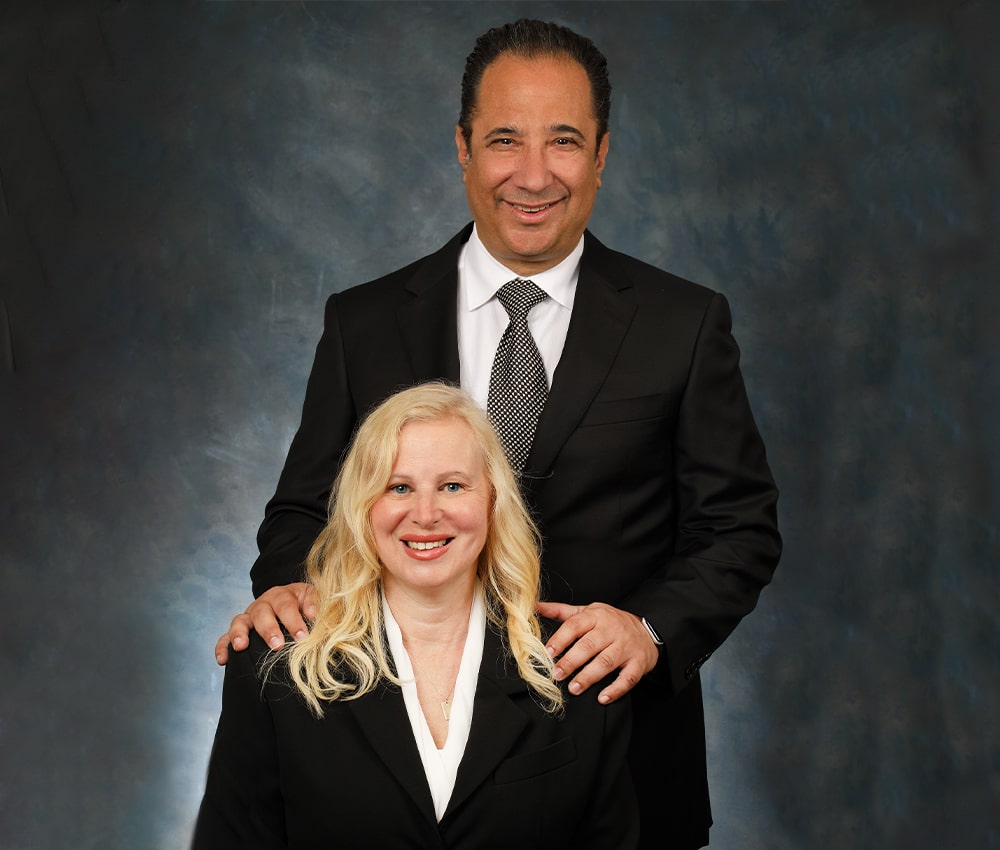 call us: (905) 456 9969
call us: (905) 456 9969 call us: (905) 456 9969
call us: (905) 456 9969
Workplace harassment is an issue that affects countless individuals across industries and job roles. It can disrupt professional environments, damage personal well-being, and impede career growth.
Surprisingly, according to the Canadian Labour Congress, the following has been reported in just the past two years:
In such situations, the expertise of employment lawyers can be invaluable. This article explores what workplace harassment entails, the various forms it takes, and how employment lawyers can assist victims in achieving justice and restoring a healthy work environment.
Workplace harassment refers to any unwelcome behavior, conduct, or communication directed at an employee that creates a hostile, intimidating, or offensive work environment. It may take place due to power dynamics, discrimination, or interpersonal conflicts and can significantly impact an individual's mental health and job performance.
While some forms of harassment are overt, such as verbal abuse or physical threats, others may be more subtle, including exclusion from opportunities or inappropriate remarks. Understanding the nuances of workplace harassment is crucial for recognizing it and taking appropriate action.
In Ontario, workplace bullying is generally defined as repeated physical actions or verbal comments that harm an employee emotionally or socially. These behaviours often aim to degrade, intimidate, humiliate, or offend the individual.
Bullying can also involve exerting power through aggressive actions. Examples include:
However, it’s important to distinguish bullying from legitimate workplace actions. Reasonable management practices, respectful disagreements, and constructive feedback related to work performance are not considered bullying.
Harassment in the workplace can take many forms. Understanding the categories helps victims identify and address the issue effectively.
Verbal harassment includes insults, derogatory remarks, and offensive jokes targeting an employee’s race, gender, religion, disability, or any other protected class or characteristic. Persistent criticism or screaming can also fall under this category.
Physical harassment involves unwelcome physical contact, such as pushing, shoving, or threatening gestures. While less common than other forms, it is severe and can escalate if not addressed promptly.
Psychological harassment includes manipulative or controlling behavior, such as intimidation, coercion, or spreading false rumors about an employee. This form of harassment can deeply affect a person’s emotional and mental well-being.
Sexual harassment is one of the most recognized forms and includes unwelcome sexual advances, inappropriate touching, suggestive comments, or sharing explicit material. It can also involve quid pro quo scenarios, where benefits are offered in exchange for sexual favors.
Employment lawyers specialize in navigating the complexities of workplace laws and can offer tailored support to victims of harassment. Here’s how they can assist:
Legal Advice and Guidance: Workplace harassment lawyers provide a clear understanding of what constitutes harassment under the law and explain the victim’s rights. They can assess the situation and determine if the behavior qualifies as harassment under relevant workplace policies and legal statutes.
Additionally, they inform victims about potential legal remedies, including compensation or reinstatement. Their expertise ensures that victims make informed decisions while pursuing justice.
Documentation and Evidence: They help collect and organize evidence, such as emails, messages, or witness testimonies, to strengthen the victim’s case. Lawyers ensure that the evidence is relevant, admissible, and aligns with legal requirements.
They may also work with experts, such as forensic analysts, to uncover hidden or deleted evidence. Proper documentation can significantly enhance the chances of a successful outcome in legal or internal proceedings.
Negotiation and Mediation: An employee workplace harassment attorney can act as an intermediary between the victim and employer, aiming for an amicable resolution through negotiation or mediation.
They advocate for fair treatment and ensure the victim’s voice is heard during discussions. Their presence often encourages employers to take corrective actions promptly. Effective negotiation can lead to settlements without the need for prolonged and costly litigation.
Representation: In cases where the matter escalates, employment lawyers represent victims in court or during tribunal proceedings. They craft compelling legal arguments, supported by evidence, to advocate rigorously for the victim’s rights.
Their expertise in procedural laws ensures compliance with filing deadlines and courtroom procedures. Representation by an experienced lawyer increases the victim’s chances of obtaining a favorable verdict or settlement.
Having an experienced employment lawyer by your side offers several advantages when dealing with workplace harassment:
Workplace harassment is a serious issue that requires swift and decisive action to protect employees and maintain a respectful work environment. Employment lawyers play a crucial role in helping victims understand their rights, build strong cases, and achieve justice for the aggrieved party.
If you face workplace harassment, remember that you don’t have to face it alone. By taking proactive steps and seeking professional guidance from Rutman & Rutman Professional Corporation, you can navigate this challenging time and move toward a resolution that upholds your dignity, well-being and restores a healthy work environment. We employ high quality, experienced Employment law attorneys that are well versed in handling workplace harassment cases with compassion and expertise, and will be a champion of your rights and entitlements.
Getting sick is an unavoidable part of life. No one knows when they have to leave all their work and take time off due to illness. But for people living in Ontario, things are different when it comes to sick days. People there often have these questions running through their minds - Am I entitled to sick leave? Will I get a paid leave? What if my leave request gets disapproved? And more So, we are here to answer all your questions. No matter if you are a full-time worker, doing part-time, or just working under a contract, it is crucial for you to understand your rights and obligations regarding sick days in Ontario. If you know what to expect during your hard days will help you to plan things without stress and you are sure to receive fair treatment. Are Sick Days Paid in Ontario? That one question every...
Read MoreBeing a common law partner in Ontario, you might think that your relationship mirrors that of a married couple. However, the legal realities have a different story to tell. Here is what you need to know – even though love may bind you, the law operates differently for conjugal partners. Through this blog, we will break down the crucial distinctions between married and common law status. Knowledge is power, so we'll unravel the essential rights, equipping you to make informed decisions. So, are you ready to get started? Well, here we go. What is a Common Law Partner? A common law partner is a person with whom you share a domestic and committed relationship but without being married legally. Even though these partners share responsibilities like parenting and finances, their legal rights are not equivalent to those of married couples. For instance, conjugal partners do not automatically have rights to...
Read MoreMarriages are commitments that are supposed to last forever, but sometimes, things do not turn out as you plan, and that’s completely fine. In Ontario, when a relationship reaches its breaking point, couples have two legal options to choose between - divorce or annulment. How do you know which one to choose? To make it simpler for you to understand here is the major difference between these two– a divorce is like returning a product you used but no longer want, while an annulment is like saying the product was faulty and shouldn’t have been sold in the first place. Now, let's delve deeper to know the key differences and help you figure out the best way forward! What Is a Divorce? Divorce can be explained as a legal process for putting an end to a valid marriage. This means that the couple, who has now decided to part ways...
Read More
Being a common law partner in Ontario, you might think that your relationship mirrors that of a married couple. However, the legal realities have a different story to tell. Here is what you need to know – even though love may bind you, the law operates differently for conjugal partners. Through this blog, we will break down the crucial distinctions between married and common law status. Knowledge is power, so we'll unravel the essential rights, equipping you to make informed decisions. So, are you ready to get started? Well, here we go. What is a Common Law Partner? A common law partner is a person with whom you share a domestic and committed relationship but without being married legally. Even though these partners share responsibilities like parenting and finances, their legal rights are not equivalent to those of married couples. For instance, conjugal partners do not automatically have rights to...
Read More
Marriages are commitments that are supposed to last forever, but sometimes, things do not turn out as you plan, and that’s completely fine. In Ontario, when a relationship reaches its breaking point, couples have two legal options to choose between - divorce or annulment. How do you know which one to choose? To make it simpler for you to understand here is the major difference between these two– a divorce is like returning a product you used but no longer want, while an annulment is like saying the product was faulty and shouldn’t have been sold in the first place. Now, let's delve deeper to know the key differences and help you figure out the best way forward! What Is a Divorce? Divorce can be explained as a legal process for putting an end to a valid marriage. This means that the couple, who has now decided to part ways...
Read More
A no fault divorce is exactly what it sounds like - a divorce where neither party has to prove that the other person was responsible for the separation. Gone are the days when you had to collect evidence and accuse your spouse of wrongdoing to file a divorce. Things have become simple now, you and your partner just have to cite that your marriage has "irreconcilable differences" or has suffered an "irretrievable breakdown." So, for those who would like to walk away from their marriage without reliving painful moments, this is the best step to take. No blame, no accusations – just the right way to forget the past and move forward. However, you must know the details in depth and about how it actually works. So, here we are with the complete so you can know if it’s the right choice for you. How Does a No Fault Divorce...
Read More

Are you stuck with a legal issue? Don't navigate the complexities alone! Turn to our top-rated lawyers for expert guidance and support, ensuring you make informed decisions every step of the way!